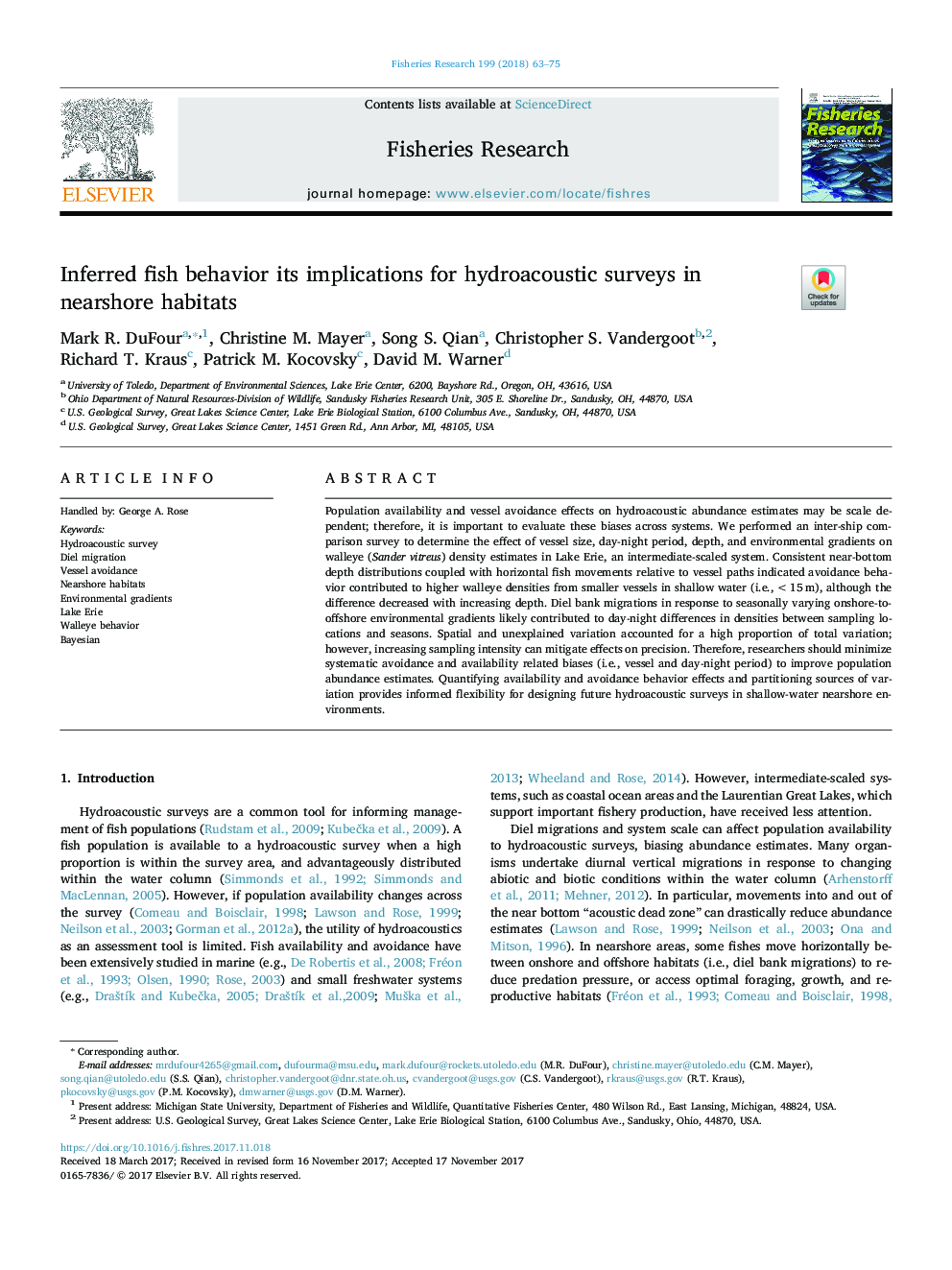| Article ID | Journal | Published Year | Pages | File Type |
|---|---|---|---|---|
| 8885539 | Fisheries Research | 2018 | 13 Pages |
Abstract
Population availability and vessel avoidance effects on hydroacoustic abundance estimates may be scale dependent; therefore, it is important to evaluate these biases across systems. We performed an inter-ship comparison survey to determine the effect of vessel size, day-night period, depth, and environmental gradients on walleye (Sander vitreus) density estimates in Lake Erie, an intermediate-scaled system. Consistent near-bottom depth distributions coupled with horizontal fish movements relative to vessel paths indicated avoidance behavior contributed to higher walleye densities from smaller vessels in shallow water (i.e., <15Â m), although the difference decreased with increasing depth. Diel bank migrations in response to seasonally varying onshore-to-offshore environmental gradients likely contributed to day-night differences in densities between sampling locations and seasons. Spatial and unexplained variation accounted for a high proportion of total variation; however, increasing sampling intensity can mitigate effects on precision. Therefore, researchers should minimize systematic avoidance and availability related biases (i.e., vessel and day-night period) to improve population abundance estimates. Quantifying availability and avoidance behavior effects and partitioning sources of variation provides informed flexibility for designing future hydroacoustic surveys in shallow-water nearshore environments.
Related Topics
Life Sciences
Agricultural and Biological Sciences
Aquatic Science
Authors
Mark R. DuFour, Christine M. Mayer, Song S. Qian, Christopher S. Vandergoot, Richard T. Kraus, Patrick M. Kocovsky, David M. Warner,
